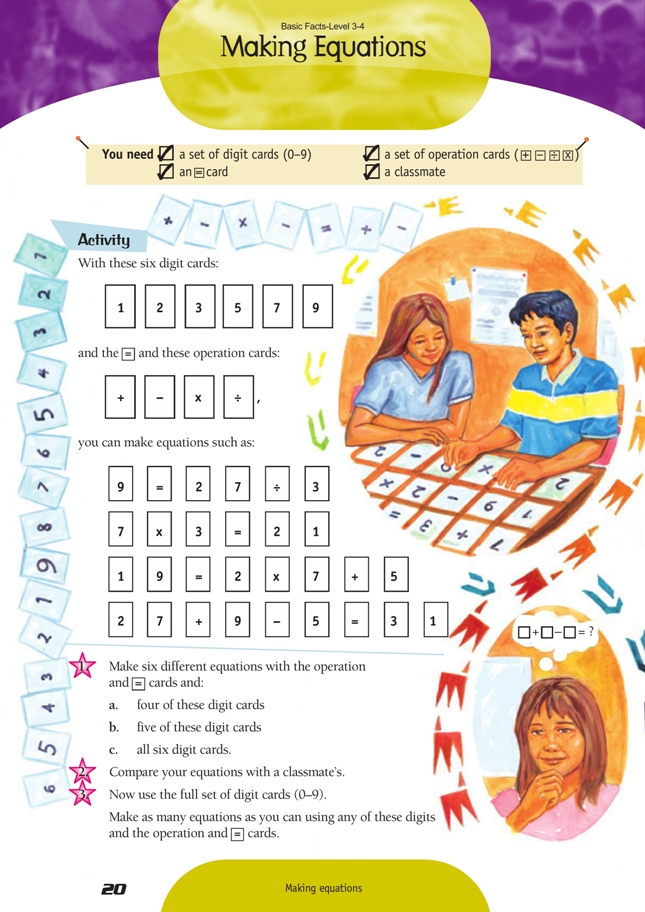This is a level 3 algebra activity from the Figure It Out series.
A PDF of the student activity is included.
Click on the image to enlarge it. Click again to close. Download PDF (207 KB)
write equations using basic facts
- Numeral cards
- A set of operation cards (+. -. x, ÷)
- FIO, Levels 3-4, Basic Facts, Making Equations, page 20
- An = card
- A classmate
This activity will increase the students’ confidence and competence with basic facts as they create equations and think about relationships instead of completing repetitious closed exercises.
Check that the students’ written expressions follow the standard order of operations (BEMA): Brackets, Exponents, Multiplication and Division (in the order they appear), Addition and Subtraction (in the order they appear).
You could consider using variations of this idea over several sessions or as part of your daily maths routine. You would need to decide how many and which digits the students can use and which operations they can use.
Showcase a few interesting examples by getting the students to write their equation on the whiteboard. For example, if a student wrote this equation: 12 ÷ 3 + 4 = 8, you could point to the 12 ÷ 3 and say: “Julie wanted another 4, so she did this”.
Other variations include:
- Ask the students to find as many expressions as possible for a given number.
- Put out the cards in a certain order and ask the students to insert the operation signs to make a correct equation. For example, with the digit cards 3, 5, 6, 2, and 1 you could get 3 x 5 + 6 = 21.
- The students may enjoy creating these puzzles for others to solve.
- Have the students play this game in pairs. One player thinks of an equation using four to six cards. They tell the other player which cards are to the left of the equals sign and which cards are to the right. The other player has to make an equation using the same cards. A point is scored if both players agree that the equation is correct.
- Use the activity daily, using that day’s date as the target number.
As an extension, suggest that the students make all the numbers 1–100, using any operations and four 4s, for example: 4 ÷ 4 + 4 – 4 = 1.
Answers to Activity
1. Teacher to check. (Examples of equations using four, five, and six digit cards are given on the page.)
2.–3. Teacher to check
